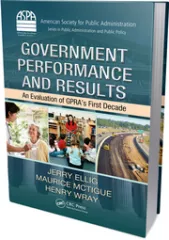Originally published in Public Choice
We examine the correlation between federal government activity and performance of the capital’s National Football League team, the Washington Redskins. We find a positive, non-spurious, and robust correlation between the Redskins’ winning percentage and bureaucratic output, measured by pages published in the Federal Register. Because the Redskins’ performance is prototypically exogenous, we give this result a causal interpretation and provide a plausible, causal mechanism: bureaucrats must make “logrolling” deals to expand their regulatory power, and a winning football team offers a shared source of optimism to lubricate such negotiations. We do not find the same correlation when examining congressional activity.
We examine the correlation between federal government activity and performance of the capital’s National Football League team, the Washington Redskins. We find a positive, non-spurious, and robust correlation between the Redskins’ winning percentage and bureaucratic output, measured by pages published in the Federal Register. Because the Redskins’ performance is prototypically exogenous, we give this result a causal interpretation and provide a plausible, causal mechanism: bureaucrats must make “logrolling” deals to expand their regulatory power, and a winning football team offers a shared source of optimism to lubricate such negotiations. We do not find the same correlation when examining congressional activity.


